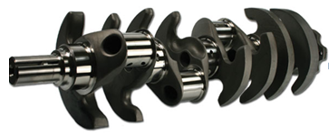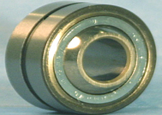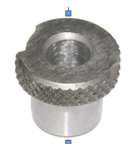Types of Bushings
Bushing (also referred to as plain bearing) is a mechanical element that is used for lowering friction between a stationary (support member) and a rotating shaft. The bushings utilize soft metal and an oil layer to support the rotating shaft on a hard shaft journal. The bushing (plain bearing) is mainly applied on machinery with sliding or rotating shaft.
The bushings can also be referred to as journal bearing, sleeve bearing, or sliding bearing. Therefore, they are designed using soft metal like babbit that helps to protect the shaft journal. They can also be designed using other materials depending on the specific application and load requirements. In some cases, bushes are used for aligning systems used in drilling operations.
The Main Types of Plain Bearings
Hydrodynamic and Babbitted Journal Bearings
These types of bearings are mainly used in supporting engine crankshafts. They are designed using highly polished surfaces and connecting bearings. Note that the bearings are positioned in the crankcase.
 The main bearings of the engine operate through a hydrodynamic regime. This means that under the standard conditions, the bearings and journals are separated by a film of oil that is created when the shaft is rotating. This oil is pumped into the bearings via feed holes.
The main bearings of the engine operate through a hydrodynamic regime. This means that under the standard conditions, the bearings and journals are separated by a film of oil that is created when the shaft is rotating. This oil is pumped into the bearings via feed holes.
The journal bearings are applied in multiple industrial turbo-machines like turbines and compressors. However, the bearings in these industries are hydrostatic. This means that the shaft can be supported by a wedge of oil even if the respective system is not operating.
Note that the bearings can be segmented or tilted to suppress shaft whip/ whirl. This problem is especially common in large turbo-charged machines. In such situations, the bearings feature babbit lining that is relatively soft and supports fluid film lubrication as it offers a forgiving surface when the hard shaft comes into contact.
Sleeve Bearings
Though the sleeve bearings have a working principle that is similar to the babbited journal bearings, they are also applied in linear motion. When describing the sleeve bearings, the terms bushings and bearings are used interchangeably. However, unlike the babbitted journal bearings, the sleeve models are easy to press in devices used to guide bushings and caster bearings.
The construction of sleeve bearing is done with sintered or cast bronze. At times they can be filled with plugs of lubricants like the graphite. The two main styles of sleeve bearings are the plain cylindrical and flanged style.
Spherical Bearings
 These bearings are designed to support angular rotation between control arms and linkages. The spherical inner race moves angularly in the outer race. Then, a lubricating layer helps to reduce the friction between the two surfaces.
These bearings are designed to support angular rotation between control arms and linkages. The spherical inner race moves angularly in the outer race. Then, a lubricating layer helps to reduce the friction between the two surfaces.
If the application is very demanding, the bearings roll between the outer and inner race to lower the friction. It is worth noting that the spherical bearings are not aimed at handling rotational per se. However, linkages often move the connected parts angularly.
Drill Jig Bushings
 These bushings are designed to provide drill guidance during precision metal drilling. They are also used in press-fit parts that utilize replaceable liners. The bushings of this type are employed for guiding as opposed to supporting. Therefore, they are designed with materials that are harder than steel. Besides, they also feature tight tolerance to maintain top-notch accuracy.
These bushings are designed to provide drill guidance during precision metal drilling. They are also used in press-fit parts that utilize replaceable liners. The bushings of this type are employed for guiding as opposed to supporting. Therefore, they are designed with materials that are harder than steel. Besides, they also feature tight tolerance to maintain top-notch accuracy.
Bushing Applications and Industries
Unlike rolling element bearings that are engineered using finite lives considerations, the plain bearings that use full-fluid lubrication can last for a very long time. Therefore, they are used in critical applications where bearing failure can cause severe impacts. These include power plant steam turbines and compressors running critical pipeline applications. Plain bearings are also common in low-speed shafting such as ship propellers.
Because of their low cost and simplicity, plain bearings are also common in the end operations such as intermittent applications. Engineers also prefer them in the food processing industries where lubrication should be kept out to prevent food contamination.
When you understand the architecture and application of bushings, it becomes easy to select the ideal option for your production system. The above guide offers the distinction you need about the bushings and areas of their application so that you can select the best and maintain it well for higher productivity.
